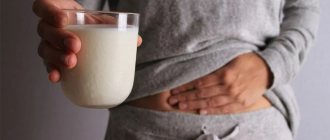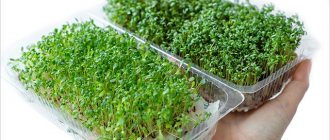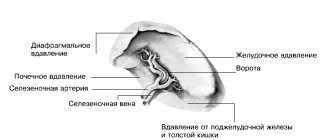Carbohydrates are the main source of energy and are polymeric forms of monosaccharides. Depending on the taste, they are classified as sugar-like and non-sugar-like. Sugar molecules are usually sweet and highly soluble in water, such as glucose and fructose. On the contrary, non-sugars do not dissolve in water and are not characterized by a sweet taste, for example, starch, fiber, cellulose. Depending on the number of simple elements in the carbohydrate composition, monosaccharides, oligosaccharides and polysaccharides are distinguished; one example of oligosaccharides is lactose.
What is lactose?
Lactose is one of the most important classes of carbohydrates; they are optically active compounds with hydroxyl and carboxyl groups.
Content:
- What is lactose?
- Breakdown of lactose
- Biological role
- Effect on the body: harm and benefit
- Lactose intolerance
- Causes of intolerance
- How to determine if you have lactose intolerance
- Products containing lactose
- How to Avoid Lactose
- Several arguments in favor of milk sugar
- Treatment of lactose intolerance
- Lactose in the food industry
- Other Applications
There are mono-, oligosaccharide carbohydrates (oligo - “several”) and polysaccharides. Oligosaccharides, in turn, are classified as disaccharides, trisaccharides, and tetrasaccharides.
Lactose (chemical formula - C12H22O11), together with sucrose and maltose, belongs to disaccharides, which upon hydrolysis forms two saccharides - glucose and galactose.
Lactose was first reported in 1619, when the Italian Fabrizio Bartoletti discovered a new substance. But it was not until 1780 that the substance was identified as sugar by a Swedish chemist, Carl Wilhelm Scheel. This disaccharide is present in cow's milk (about 4-6%) and human milk (5% to 8% of the composition). Also, milk sugar is formed as a by-product during the cheese production process and is a white solid.
In milk, this sugar is present as lactose monohydrate, a carbohydrate with a water molecule attached. Pure lactose is a white, odorless crystalline powder that is highly soluble in water but reacts poorly with alcohols. During heating, the disaccharide loses one molecule of water and anhydrous lactose is obtained.
Recommendations
- ^ a b
Peter M. Collins (2006).
Dictionary of carbohydrates
(2nd ed.). Boca Raton: Chapman and Hall/CRC. item 677. ISBN 978-0-8493-3829-8. - "D-lactose".
- The solubility of lactose in water is 189.049 g at 25 °C, 251.484 g at 40 °C and 372.149 g at 60 °C per kg solution. Its solubility in ethyl alcohol is 0.111 g at 40 °C and 0.270 g at 60 °C per kg solution. Machado, José J. B.; Coutinho, João A.; Macedo, Eugenia A. (2001), "Solid-liquid equilibrium of α-lactose in ethanol/water" (PDF), Liquid Phase Equilibria
,
173
(1): 121–34, doi:10.1016/S0378-3812(00)00388 -5.ds - Sigma Aldrich
- ^ a b c
Gerrit M. Westhoff, Ben F.M.
Kuster, Michel K. Heslinga, Hendrik Pluim, Marinus Verhaeghe (2014). "Lactose and derivatives". Ullman Encyclopedia of Industrial Chemistry
.
Ullman Encyclopedia of Industrial Chemistry
. Wiley-VCH. pp. 1–9. Doi:10.1002 / 14356007.a15_107.pub2. ISBN 9783527306732 .CS1 maint: uses the authors parameter (link) - "https://doi.org/10.1002/chemv.201800002"
- "https://doi.org/10.1039/AN9426700130"
- "https://doi.org/10.1515/cti-2019-0008"
- ^ a b c
Linko, P (1982), "Lactose and lactitol", in Birch, G. G.;
Parker, K.J. (ed.), Natural Sweeteners
, London and New Jersey: Applied Science Press, pp. 109–132, ISBN 978-0-85334-997-6 - Ranken, M.D.; Kill, R.C. (1997), Handbook of the Food Processing Industry
, Springer, p. 125, ISBN 978-0-7514-0404-3 - Wong, S. Y.; Hartel, R.W. (2014), "Crystallization during lactose refining—a review", Journal of Food Science
,
79
(3): R257–72, doi:10.1111/1750-3841.12349, PMID 24517206 - Pavia, Donald L.; Lampman, Gary M.; Creese, George S. (1990), Introduction to Organic Laboratory Techniques: A Microscale Approach
, Saunders, ISBN 0-03-014813-8 - Wade, Nicholas (2006-12-10), "Study Finds Recent Example of Human Evolution", New York Times
. - Ridley, Matt (1999), Genome
, HarperCollins, p. 193, ISBN 978-0-06-089408-5. - ^ a b c d f f gram h i j k l
Schaafsma, Gertjan (2008).
"Lactose and lactose derivatives as biologically active ingredients in human nutrition." International Dairy Journal
.
18
(5):458–465. Doi:10.1016/j.idairyj.2007.11.013. ISSN 0958-6946. - ^ a b
Björk, Inger;
Liljeberg, Elena; Ostman, Elin (2000). “Foods with a low glycemic index.” British Journal of Nutrition
.
83
(S1):S149–S155. Doi:10.1017/S0007114500001094. ISSN 0007-1145. - ^ a b
Gregory D. Miller;
Judith K. Jarvis; Lois D. McBean (December 15, 2006). Dairy and Nutrition Guide
. CRC Press. P. 248–. ISBN 978-1-4200-0431-1. - Ling, Charles (2008), Whey to Ethanol: A Role for Biofuels for Dairy Cooperatives?
(PDF). - Fabrizio Bartoletti, Methodus for dyspnea
... [Procedure for as), (Italy): Nicolo Tebaldini for the heirs of Evangelista Dozza, 1633), paragraph 400. From page 400:
“
Manna
seri hæc.
Destilla leni balnei calore serum lactis, collected in the fundus, butyracea fœx subsideat, cui hærebit salina quædam substance subalbida. Hanc curiose segrega, est enim sal seri essentiale; seu nitrum, cujus causa nitrosum dicitut serum, huicque tota abstergedi vis inest. Solve in your own aqueous solution and coagul. Opus repete, donec seri cremorem habeas sapore omnino mannam referentem ". (This is
manna
whey. [Note: "Manna" was the dried sweet sap of the
Fraxinus ornus
.] Gently distill the whey over a heating bath until an oily foam settles to the bottom of the vessel, to which the whitish salt [i.e., sediment] adheres ] This curious [once] isolated substance is indeed the base salt of whey; or, from which reason saltpeter is called "saltpetre whey", and all the [vital] force is in it, which will be expelled. [Note: "Nitre" was alchemical concept. It was the force of life that gave life to inanimate matter. See the philosophy of Sendivogius.] Dissolve it in [its] own water and roll it up. Repeat the operation until you have a cream of whey, resembling only manna in taste.) In 1688, German the physician Michael Ettmüller (1644–1683) reprinted Bartoletti's preparation.
See: Ettmüller, Michael, Opera Omnia
... (Frankfurt am Main (“Francofurtum ad Moenum”), [Germany]: Johann David Zunner, 1688), book 2, p.163.
From page 163: “Undd
Bertholet
praeparat ex sero lactis correium, quod voat
mannam
S. [alchemical symbol of salt, salem]
seri lactis
species.
in Encyclopedia
.
p. 400. Praeparatio est haec:... " (Where Bartoletti prepared a medicine from whey, which he called
manna
or
whey salt
; see in [his]
Encyclopedia
[note: this is an error; the drug appeared in Bartoletti
Methodus for shortness of breath
...] , paragraph 400. This is preparation:...) - Lodovico Testi, De novo Saccharo Lactis
[On the new milk sugar] (Venice, (Italy): Hertz, 1700). - Ludovico Testi (1715) "Saccharum lactis" (Milk sugar), Academiae Caesareo-Leopoldinae naturae curiosorum ephemeris
, ...,
3
: 69–79.
The procedure was also published in the Giornale de 'Letterati d'Italia
in 1715. - See:
- Karl Wilhelm Scheele (1780) “Om Mjölk och dess syra” (On milk and its acid), Kongliga Vetenskaps Academiens Nya Handlingar
(New Transactions of the Royal Academy of Sciences),
1
: 116–124.
From page 116: "Det år bekant, in Ko-mjölk innehåller Smör, Ost, Mjölk-såcker,..."
(Cow's milk is known to contain butter, cheese, milk sugar,...)
Karl Wilhelm Scheele (1780) “Om Mjölk-Saker-Syrah” (On lactic-sugar acid), Kongliga Vetenskaps Academiens Nya Handlingar
(New Transactions of the Royal Academy of Sciences),
1
: 269–275.
From pages 269–270: “Mjölk-Såcker år et sal essentiale, som uti Mjölken finnes uplöst, och som, för dess sötaktiga smak skull, fått namn af såcker.”
(Milk sugar is an essential salt dissolved in milk and called "sugar" because of its sweet taste.) - Karl Wilhelm Scheele (1780) “Om Mjölk och dess syra” (On milk and its acid), Kongliga Vetenskaps Academiens Nya Handlingar
- See:
- Vogel (1812) "Sur le sucre liquide d'amidon, et sur la transmutation des matières douces en sucre fermentescable" (On the liquid sugar of starch and on the transformation of sweet substances into fermentable sugars), Annals of Chemistry and the Body
, series 1,
82
: 148 –164; see especially pp. 156–158.
H. A. Vogel (1812) "Ueber die Verwandlung der Stärke und andrer Körper in Zucker" (On the conversion of starch and other substances into sugar), Annalen der Physik
, new series,
42
: 123–134; see especially pp. 129–131. - Vogel (1812) "Sur le sucre liquide d'amidon, et sur la transmutation des matières douces en sucre fermentescable" (On the liquid sugar of starch and on the transformation of sweet substances into fermentable sugars), Annals of Chemistry and the Body
- Pasteur (1856) "Note sur le sucre de lait" (Note on milk sugar), Comptes rendus
,
42
: 347–351. - Fischer defined the configuration of glucose as:
- Emil Fischer (1891) "Ueber die Configuration des Traubenzuckers und seiner Isomeren" (On the configuration of grape sugar and its isomers), Berichte der Deutschen Chemischen Gesellschaft
,
24
: 1836–1845.
Emil Fischer (1891) “Ueber die Configuration des Traubenzuckers und seiner Isomeren. II" (On the configuration of grape sugar and its isomers), Berichte der Deutschen Chemischen Gesellschaft
,
24
: 2683–2687. - Emil Fischer (1891) "Ueber die Configuration des Traubenzuckers und seiner Isomeren" (On the configuration of grape sugar and its isomers), Berichte der Deutschen Chemischen Gesellschaft
Fischer set the configuration of galactose to:
- Emil Fischer and Robert S. Morrell (1894) “Ueber die Configuration der Rhamnose und Galactose” (On the configuration of rhamnose and galactose), Berichte der Deutschen Chemischen Gesellschaft zu Berlin
,
27
: 382–394. The galactose configuration is shown on page 385.
, volume 6 (Paris, France: Bechet Jeune, 1843), para. 293.
,
42
: 347–351.
From page 348: "Je propose de le nommer
lactose
."
(I suggest calling it
lactose
.)
[Organic chemistry based on synthesis] (Paris, France: Mallet-Bachelier, 1860), vol. 2, pp. 248–249 and pp. 268–270.
Breakdown of lactose
As already noted, in milk the share of this carbohydrate is approximately 6 percent of the total composition. Entering the body along with dairy products, lactose is affected by enzymes and then enters the blood. However, there are times when the body is unable to digest milk sugar because it cannot produce the enzyme lactase needed to break it down. And with age, as scientific experience shows, people are increasingly at risk of deficiency or complete absence of lactase, which causes complete intolerance to dairy products.
It is believed that humans domesticated cattle about 8 thousand years ago. And only after this did dairy products appear in the diet of ancient man. More precisely not so. Since that time, dairy products have also appeared in the diet of adults, since previously only infants fed on milk, and exclusively from their mothers. That is why nature has determined that babies have practically no problems with the absorption of dairy foods, since lactase is produced regularly and regularly in their bodies. Ancient people in adulthood were completely deprived of lactase and did not experience any discomfort from this. And only after the introduction of milk into the diet, most people experienced a kind of mutation - the body began to produce the enzyme necessary for the digestion of lactose in adults.
Classification
It is customary to distinguish congenital lactase deficiency, which manifests itself immediately after the birth of a child; lactase deficiency of the adult type, among which there are:
- primary genetically determined LI, which is based on a hereditarily determined decrease in lactase activity after the transition to an adult type of nutrition (cessation of milk feeding);
- secondary LN, which develops against the background of damage to enterocytes in various intestinal diseases;
- transient (transient) LI in immature (premature) children.
According to the severity of enzyme deficiency, the following are distinguished:
- partial decrease in enzyme activity ( hypolactasia );
- complete absence of the enzyme ( alactasia ).
Effect on the body: harm and benefit
Lactose is a disaccharide that can affect the human body in different ways.
It causes harm to some, and benefits to others.
Lactose for...
...energy
All carbohydrates are sources of energy. Lactose also serves as a kind of fuel for humans. After entering the body, it is metabolized and promotes the release of energy. In addition, consumption of milk sugar preserves protein reserves in the body. If there is a sufficient amount of carbohydrates, including lactose, the body does not use proteins as fuel, but accumulates them in the muscles, which allows proteins to perform other equally important functions.
…increase in body weight
If the number of calories consumed exceeds the number of calories burned, the excess is stored as fat. When lactose is consumed in larger quantities than necessary, the body transforms the sugar into fat tissue, which subsequently leads to weight gain. This ability of milk sugar is used when it is necessary to adjust body weight towards increase.
...digestion
Before lactose is converted into energy, it must enter the food tract, where it is broken down into monosaccharides by an enzyme. However, if the body does not produce enough lactase, digestive tract problems may occur. Undigested milk sugar causes stomach upset, including abdominal pain, bloating, nausea and diarrhea.
Lactose intolerance
Lactose intolerance is the body's inability to digest milk sugar.
Primary symptoms of intolerance:
- diarrhea;
- flatulence;
- stomach pain;
- nausea.
There are several laboratory testing options that will help determine the presence of intolerance to this type of carbohydrate. Of course, in this case it is easiest to give up dairy foods. But completely avoiding milk can cause calcium and vitamin D deficiency, which in turn will cause bone disease. Therefore, there are various dietary supplements that allow you to consume at least minimal portions of milk.
In children
Symptoms of lactose intolerance in infants are in principle similar to those in adults, but quite often they are supplemented by dyspeptic disorders (regurgitation, colic), rapidly developing dehydration, restless behavior, refusal to eat, insufficient weight gain, hyperexcitability, sleep disturbances, irritability, lag from the age norm of psychomotor development. In severe cases, infants may develop toxicosis /with exicosis . Children with lactase deficiency may develop D-deficiency rickets , muscle hypotonia , attention deficit hyperactivity disorder, and seizures .
Treatment of children is also based on an elimination diet. In infants, diet correction is somewhat difficult. When breastfeeding, a decrease in the amount of breast milk in the diet is extremely undesirable. The best option in such cases is to prescribe lactase preparations, for example, Natures Way or Schwarz Pharma Kremers Urban, which, when mixed with expressed breast milk, breaks down lactose without affecting the properties of breast milk.
For lactose intolerance in infants, low-lactose/lactose-free milk formulas are widely used - with a special label LL (low lactose), SL (sine lactose), LF (lactose free), in which the carbohydrate component is represented by maltodextran/dry corn syrup, with the protein component as close as possible /fat components to the composition of human milk. The composition of these mixtures is enriched with vitamins, essential microelements, and essential amino acids. The extremely low osmolarity of these mixtures contributes to the risk of developing diarrhea. Such mixtures include lactose-free NAN, low-lactose Nutrilon.
Adding the drug to breast/cow's milk allows you to obtain a lactose-free product. The use of such lactase enzyme preparations in the treatment of LN allows one to quickly stop the manifestations of the disease while maintaining breastfeeding.
The duration of a lactose-free diet is determined individually and depends on the severity of the disease. When the child’s condition improves against the background of the “ripening” of his enzyme systems, you can try to carefully/gradually introduce dairy products into the diet. It is recommended to start with fermented milk products with partially fermented-split sugar - acidophilus mixtures, NAN fermented milk, kefir. The introduction of other products (eggs, meat, fish, vegetables/fruits) is introduced according to the general principles of complementary feeding. We should not forget that prolonged lactose-free diet leads to a significant decrease in calcium in the diet, which is extremely important for a child during a period of intensive growth and to correct the intake of calcium/vitamin D in the body.
The effectiveness of dietary nutrition is determined by a decrease in symptoms, the elimination of dyspeptic symptoms, as well as laboratory data - an increase in stool pH. Reduction/cancellation of a lactose-free diet can be carried out only after a test - control loads of milk. A reliable indicator of increased lactose tolerance is the absence of intestinal disturbances after exercise tests.
Causes of intolerance
Lactase deficiency can be congenital. This usually happens in people due to changes at the gene level.
In addition, intolerance can appear as a result of diseases, including those accompanied by destruction of the mucous membrane of the small intestine. Also, signs of intolerance may appear with age or against the background of serious intestinal diseases, such as Crohn's disease.
One of the most common causes of lactase deficiency is the result of genetic programming. Nature has laid down a “program” according to which the amount of lactase produced decreases with age. And by the way, in different ethnic groups the intensity and speed of this decrease is different. The highest rate of lactose intolerance is recorded among Asians. Almost 90 percent of Asian adults are milk intolerant. But for residents of northern Europe, hypolactasia is a very rare problem: only 5 percent of adults experience a lack of the enzyme.
And one more thing: it is necessary to distinguish between two concepts - lactose intolerance and lactase deficiency. People with moderate enzyme deficiency usually do not even notice discomfort after consuming dairy foods. With lactase deficiency, the concentration of the enzyme in the intestines decreases without causing side effects. But intolerance is accompanied by pronounced symptoms of non-acceptance of milk by the body. They occur after the unsplit disaccharide enters the intestine. But, unfortunately, the symptoms of intolerance can resemble other gastrointestinal diseases, so it is difficult to diagnose lactose intolerance based solely on these signs.
There are three main types of lactose intolerance:
- Primary. This is the most common type. It occurs with age and is explained by the physiological characteristics of the body. Over the years, people consume less and less dairy foods, which means that the need for lactase production disappears. This type of intolerance is most common among residents of Asia, Africa, the Mediterranean and the Americas.
- Secondary. Occurs as a result of illness or injury. Most often together with celiac disease, after inflammation of the intestines, surgical operations on the small intestine. Other underlying causes of intolerance may include Crohn's disease, Whipple's disease, ulcerative colitis, chemotherapy, and even influenza complications.
- Temporary. This type of intolerance occurs in babies born prematurely. This is explained by the fact that only after the 34th week of pregnancy does the fetus develop the function of producing the enzyme lactase.
Pathogenesis
With lactase deficiency, undigested carbohydrates accumulate in the distal intestine, which causes an increase in osmotic pressure leading to excess fluid entering the lumen of the large intestine. Disaccharides undergo bacterial decomposition - a process of fermentation (utilization), which is accompanied by the formation of organic acids (acetic / lactic), carbon dioxide and hydrogen and increases the flow of fluid into the intestines. The pH of the stool sharply decreases, and dyskinetic disorders are formed - watery, foamy stools with a characteristic sour fermentative odor.
Excess disaccharides are partially excreted unchanged in feces, partially excreted in urine, partially absorbed in the large intestine and enter the bloodstream, which contributes to the development of glycosuria (sucroseuria, lactosuria, maltosuria). The resulting bacterial metabolites deepen functional disorders of the intestines, and when they enter the bloodstream they have a toxic effect on the body.
How to determine if you have lactose intolerance
Determining lactose intolerance on your own is not so easy. Many people think that it is enough to give up dairy products to avoid unpleasant consequences. In fact, lactose is not only found in dairy products in modern foods. Some people give up milk completely but still experience indigestion symptoms. Therefore, it is not surprising that they mistakenly cross lactose intolerance off the list of possible causes of indigestion.
At home, you can check your tolerance/intolerance using a test. So, on the day before the study, the last meal is no later than 18 hours. Then in the morning on an empty stomach, drink a glass of milk and again do not eat anything for 3-5 hours. If you have lactose intolerance, symptoms should appear within 30 minutes after taking the product or within a maximum of 2 hours. Also, take skim milk for testing to rule out the possibility that fat caused indigestion.
List of sources
- Mukhina Yu. G., Chubarova A. I., Geraskina V. P. Modern aspects of the problem of lactase deficiency in young children // Questions of pediatric dietology, 2003, volume 1, no. 1, pp. 50–56.
- Chubarova A. I., Geraskina V. P., Kyshtymov M. V. with co-author. The effectiveness of enzyme therapy and diet therapy for lactase deficiency in newborns // Questions of pediatric dietology, 2003, volume 1, no. 4, p. 21–24.
- Mukhina Yu. G., Chubarova A. I., Geraskina V. P., Belmer S. V., Gasilina T. V., Borovik T. E., Roslavtseva E. A., Skvortsova V. A., Yatsyk G. V. Working protocol for the diagnosis and treatment of lactase deficiency in children // Issues. det. diets 2016; 14(1):64–69.
- Belmer S.V., Mukhina Yu.G., Chubarova A.I., Geraskina V.P., Gailina T.V. Lactose intolerance in children and adults // Attending Physician. January 2005, No. 1, p. 34–36.
- Kon I. Ya. Specialized medical nutrition products: characteristics and use in young children // Children's Doctor, 2000, No. 3, p. 43–47.
Products containing lactose
The most obvious sources of lactose are dairy products. You can be sure that when you consume milk, yogurt, sour cream, and cheeses, you will definitely get lactose.
But there is a list of less obvious sources. And to be more precise – very unexpected. Now let’s analyze the list of products that contain milk sugar.
Dairy food
Dairy products are not only the most obvious sources of lactose, but also the most concentrated in this carbohydrate. A glass of milk, for example, contains about 12 grams of lactose. But cheese, one serving of which is filled with less than 1 g of milk sugar, is already considered a low-content product (cheddar, Parmesan, ricotta, Swiss). Fermented dairy products such as yoghurt do not have the lowest lactose concentration either. But due to the presence of enzymes in their composition that destroy the disaccharide, they are easier to tolerate.
An alternative to cow's milk is lactose-free soy milk and other plant analogues. Also, with hypolactasia, milk can be replaced with fermented milk products, since in kefir, for example, the concentration of carbohydrate is reduced due to the presence of other enzymes in its composition.
Other products
Small amounts of milk sugar are found in baked goods, breakfast formulas, chips and dry soups. In addition, when buying margarines and salad dressings, you should be prepared to consume lactose, albeit in small portions. The answer to the question: “How was this product prepared?” will help determine the presence of saccharide in a particular product.
Processed foods
Many food products are processed with milk and dairy products to extend their shelf life. Therefore, it is important for people with lactose intolerance to read food labels carefully. The presence of milk, whey, curd, milk by-products, powdered milk, skim milk among the ingredients indicates the presence of lactose.
Hidden sources of milk sugar:
- Medications.
Many medications contain lactose as a filler, which improves the bioavailability of the drug and its taste. In particular, milk sugar is found in birth control pills and vitamin D. But, as a rule, carbohydrates are presented in very small proportions in these preparations. So even people with intolerance to the substance will respond normally to medications.
- Processed grains.
Waffles, cookies, crackers, bread, potato chips, muesli, and cereals also often contain lactose. And people whose bodies do not have the lactase enzyme must be prepared for this.
- Processed meat.
Meat is perhaps the last food you would think of as a source of lactose. But, nevertheless, processed meat in the form of bacon, sausages, sausages and other products is not devoid of milk sugar.
- Instant coffee, “quick” soups.
Do you like coffee and soups or potatoes, for the preparation of which you just need to add boiling water? Then know that you are getting lactose with them. Why is there milk sugar in these products? It provides texture to the product, prevents clumping, and of course gives it a special flavor.
- Salads.
Many salad dressings contain lactose, which gives the product the necessary texture and taste. If you want to avoid extra portions of milk sugar, then it is better to use vegetable oil, such as olive oil, as a dressing. In addition, this is a healthier product than ready-made dressing.
- Artificial sweeteners.
Some of these sugar substitutes contain lactose. Thanks to it, sweeteners in the form of tablets or powder dissolve more quickly in food.
- Alcohol.
Certain types of alcohol also contain milk sugar. The concentration of the substance is especially high in milk-based liqueurs. So alcohol is also one of the products whose composition may not be suitable for people with lactose intolerance.
- Margarines
Many people are absolutely sure that margarine is a completely vegetable substitute for butter, which means there can be no dairy ingredients in it.
In fact, most fats in this category contain lactose, which improves the taste of margarine. Milk sugar content table
| Product name (glass) | Lactose (g) |
| Women's milk | 17,5 |
| Ice cream | 14,5 |
| Kumis | 13,5 |
| Goat milk | 12 |
| Cow's milk | 11,7 |
| Curdled milk | 10,25 |
| Cream | 9,5 |
| Kefir | 9 |
| Yogurt | 8,75 |
| Sour cream (20 percent) | 8 |
| Cottage cheese | 3,5 |
| Butter | 2,5 |
Diet
Diet for lactase deficiency in adults
- Efficacy: therapeutic effect after 10 days
- Terms: from 1 month or more
- Cost of products: 1400-1500 rubles. in Week
The basis of dietary nutrition is the limitation/exclusion of lactose-containing products. Depending on the severity of clinical symptoms, the following should be excluded/limited from the diet:
- Whole, dry, condensed milk, cream, sour cream, ice cream, kumiss, cheeses, butter, cottage cheese.
- Chips, cheeseburgers, croquettes, hamburgers.
- Bakery/confectionery products, cakes, chocolate bars, pies, milk candies, cocoa powder, caramel.
- Semi-finished meat products, canned food, sausages, sandwich masses.
- Mayonnaise-based salad dressings and milk-based sauces.
- Ready-made sauces, soups/broths in bags and ketchup, bulk spices.
- Mashed potatoes, puddings.
In case of severe flatulence , foods that support fermentation (white cabbage, peas/beans, grapes, raisins, plums, yeast baked goods and sugar) should be limited.
It should be taken into account that a number of products contain “hidden lactose” and its presence may not be declared on the packaging. Products with hidden lactose include: breakfast cereals, muesli bars, chocolates/chocolate candies, bread, sausage/ham, mayonnaise, instant soups, margarine, etc.
For inclusion in the diet of patients with LI, soy products (soy milk, soy mixtures), virgin vegetable oils, dietary meat/poultry, boiled and steamed fish, chicken/quail eggs, low-lactose milk formulas, cereals on any cereals cooked in vegetable broth or water, soups in weak broth, fruits/vegetables in any form, legumes, whey-free bread, pasta, lard, syrups, honey, jam, seeds, nuts, saccharin. Drinks include weak coffee, green/herbal tea, rosehip infusion, juice, mineral water.
It is extremely important to include calcium-rich foods in your diet (flax seeds, pistachios, garlic, sesame seeds, tofu, almonds, dried rosemary/parsley, poppy seeds, kale, broccoli, spinach, turnips). It is also important to include foods containing vitamin D, which promotes the absorption of calcium (cod liver, mackerel, trout, pollock, sea bass, tuna, pine nut oil, nuts, vegetable oils) and foods rich in phosphorus (dried mushrooms, fatty fish, bran , tea).
How to Avoid Lactose
So, the only way to avoid lactose in store-bought products is to read labels carefully. At the same time, you should not hope that the manufacturer will write on all products: “Contains lactose.” In fact, this substance in food can be hidden under other names, for example: whey, casein, cottage cheese, milk powder. But at the same time, you need to know that similar names - lactate and lactic acid - are completely different ingredients that are not related to lactose.
Bodybuilders are also not immune to lactose intolerance, since most protein shakes contain milk. Therefore, sports nutrition manufacturers have created lactose-free protein , which, however, can be consumed by all lactase-free people.
Several arguments in favor of milk sugar
Many people talk about lactose exclusively as a harmful substance. Meanwhile, it is worth remembering that these carbohydrates are contained in milk - a product that, as nature intended, mammals feed their newborn children. And logically, this food should have many beneficial properties.
Benefits of milk sugar:
- galactose, which is part of lactose, is one of the 8 essential sugars for the body;
- supports immunity, promotes the production of antibodies;
- galactose, a component of lactose, is called brain sugar and is particularly important for infants;
- galactose – prevention against cancer and cataracts;
- improves wound healing;
- accelerates metabolism and absorption of calcium;
- protects against x-ray radiation;
- important for people with arthritis and lupus;
- prophylactic against cardiac diseases;
- lactose – low-calorie sweetener;
- the glycemic index of lactose is more than 2 times lower than that of glucose, which is useful for patients with diabetes;
- stimulates the nervous system;
- lactose has a positive effect on the intestinal microflora, stimulating the growth of beneficial bacteria.
Treatment of lactose intolerance
Best materials of the month
- Coronaviruses: SARS-CoV-2 (COVID-19)
- Antibiotics for the prevention and treatment of COVID-19: how effective are they?
- The most common "office" diseases
- Does vodka kill coronavirus?
- How to stay alive on our roads?
There are currently no treatments for lactose intolerance other than consuming the lactase enzyme in tablet form. The only thing that can help people with this disorder is to limit the consumption of foods containing lactose. It is believed that about half a glass of milk (contains about 4.5 g of saccharide) does not cause intolerance effects. Also, when consuming dairy products, it is better to give preference to low-fat or low-lipid foods, since they tend to have lower lactose concentrations. For babies with lactose intolerance, there is lactose-free infant formula .
Sometimes people mistakenly call lactose intolerance a milk allergy. In fact, these are two different diseases. The only thing they have in common is that unpleasant consequences, as a rule, are caused by dairy foods. Meanwhile, allergies are accompanied by a skin rash, itching, and runny nose, which never happens with hypolactasia. The main difference between both diseases is the cause of their occurrence. Allergies indicate problems with the immune system, lactose intolerance indicates an enzyme deficiency.
Other Applications
Lactose is widely used in pharmacology. It is a necessary component for the production of lactulose, a laxative, and is also used in the production of dietary supplements used for the prevention and treatment of dysbiosis. In the production of penicillin it is used as a basis for a nutrient medium.
Lately, a lot has been revised and questioned. It turned out that milk and the lactose it contains are contraindicated for some people. Despite this, for most it remains an irreplaceable and useful source of energy and health.
Lactose in the food industry
The modern food industry has learned to use lactose not only in dairy products. This type of carbohydrate is found in glazes, plays the role of a filler in baked goods, and is found in cookies, pancakes and porridges. It is used as a food additive, and since it does not have a pronounced taste, it is used in many categories of food. This substance can be found in frozen and canned vegetables as it prevents color loss. Lactose is found in dry soups, wholemeal flour and many other products.










